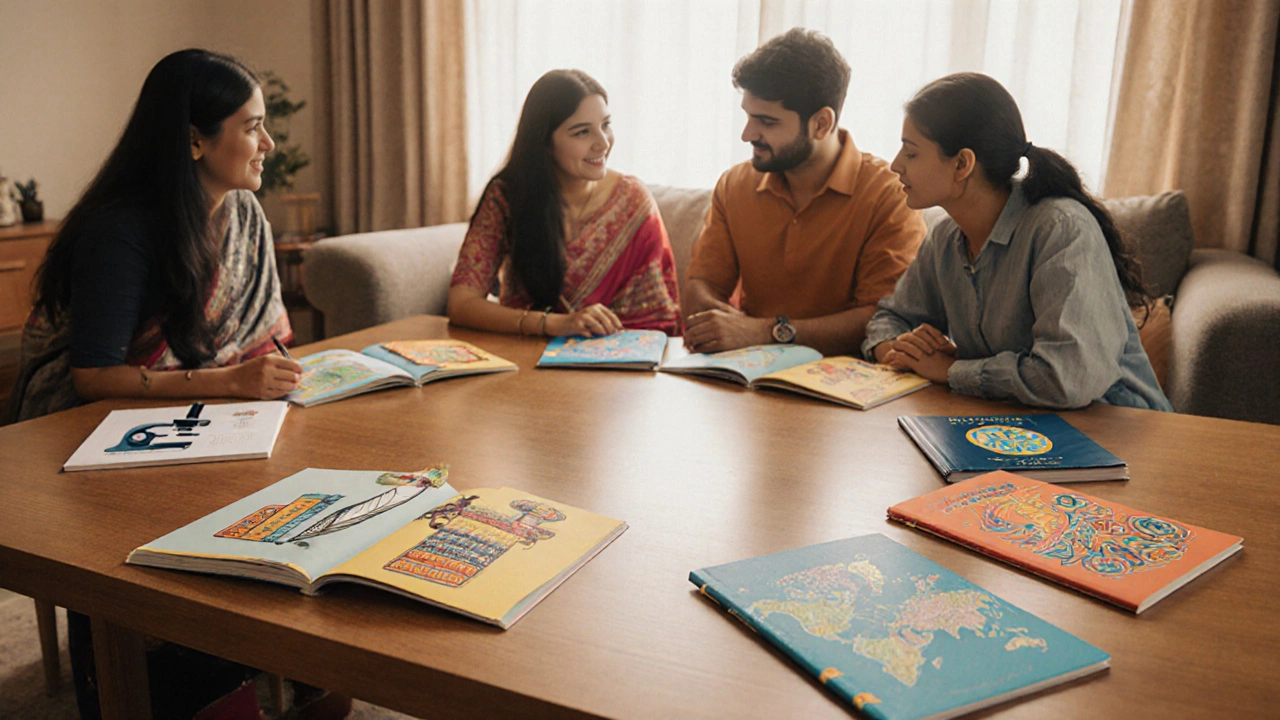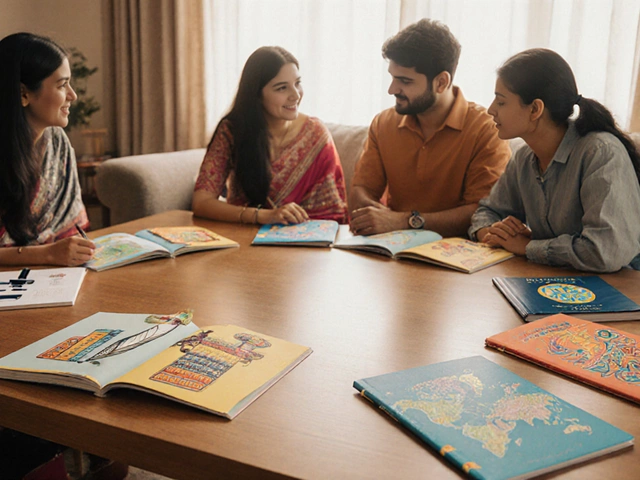When it comes to a child’s education, the choice of school board can feel like a make‑or‑break decision. School Board is the governing body that designs the curriculum, conducts examinations, and sets academic standards for schools in India. Parents often wonder which one will nurture their child’s strengths, keep future options open, and fit the family’s budget. This guide walks you through the major boards, highlights the key factors that matter most, and gives you a step‑by‑step plan to decide confidently.
Quick Takeaways
- CBSE focuses on a national curriculum and is ideal for students aiming for engineering or medical entrance exams.
- ICSE offers a deeper, language‑rich syllabus, great for children who love literature and analytical writing.
- State Boards align with local language and culture, often cheaper but may limit out‑of‑state mobility.
- IB and Cambridge (IGCSE) provide an international outlook, strong critical‑thinking skills, and easier global university admissions.
- Match the board to your child’s learning style, future goals, and your financial comfort.
Understanding the Main Boards
Below is a snapshot of the five most common boards families encounter.
| Board | Curriculum Focus | Assessment Style | Medium of Instruction | Recognition & Mobility | Typical Cost (per year) |
|---|---|---|---|---|---|
| CBSE | Science‑heavy, uniform across India | Annual board exams (Class 10 & 12) | English (regional languages optional) | Nationally accepted; good for engineering/medical prep | ₹30,000‑₹70,000 |
| ICSE | Balanced - arts, science, language depth | Annual exams + project work | English only | Recognized nationwide; favoured by humanities students | ₹45,000‑₹90,000 |
| State Board | Region‑specific syllabus, strong local language | Annual exams, less standardized | Regional language + English | Widely accepted locally; may need conversion for out‑of‑state moves | ₹20,000‑₹50,000 |
| International Baccalaureate (IB) | Inquiry‑based, global perspectives | Continuous assessment + final exams | English (multilingual options) | Globally recognized; smooth university entry abroad | ₹2,00,000‑₹4,00,000 |
| Cambridge IGCSE | International curriculum, flexible subject choices | Exam‑based, graded per subject | English | Accepted in UK, US, Australia, and Indian elite schools | ₹1,50,000‑₹3,00,000 |
Key Factors to Consider
Choosing the right board isn’t about picking the “best” in a vacuum. It’s about matching a set of criteria to your child’s unique situation.
- Future Academic Goals: If your child plans to sit for JEE or NEET, CBSE’s alignment with those exams gives a clear advantage. For a child eyeing liberal arts or a career in journalism, ICSE’s emphasis on language and project work can be more rewarding.
- Learning Style: Some kids thrive on structured, exam‑oriented learning (CBSE). Others prefer investigative projects and essays (IB, IGCSE). Observe how your child reacts to homework, classroom discussions, and test feedback.
- Mobility: Families that move between states or abroad benefit from a board with national or international recognition. IB and Cambridge make transitions smoother, while State Boards can create hassles when relocating.
- Financial Commitment: International boards carry hefty fees, scholarships aside. State Boards are the most affordable, but hidden costs (transport, extra tuition) can add up.
- Language Preference: If your child is more comfortable in the regional language, a State Board may boost confidence. English‑only boards demand stronger language skills early on.
- Extracurricular Emphasis: IB mandates Creativity, Activity, Service (CAS) projects, nurturing well‑rounded development. CBSE and State Boards traditionally focus more on academics, though many schools now offer clubs and sports.

Step‑by‑Step Decision Framework
- Map the Goal: Write down short‑term (grade‑10 board exam) and long‑term goals (college, career, possible overseas study).
- Assess the Child’s Profile: Use a simple chart to note strengths (math, language, arts), preferred learning style (structured vs. project), and any special needs.
- Gather School Data: For each nearby school, note the board, fee structure, teacher‑student ratio, extracurricular facilities, and past board results.
- Run a Cost‑Benefit Matrix: Assign a weight (1‑5) to each factor (cost, mobility, curriculum fit) and calculate a score for each board.
- Visit Campuses: Observe classroom dynamics, ask teachers about assessment methods, and speak to current parents.
- Make a Trial Decision: Choose the top‑scoring board for the next academic year. Re‑evaluate after the first term based on performance and satisfaction.
Common Misconceptions Debunked
Parents often rely on myths that can skew the decision.
- Myth: "CBSE is easier than ICSE." - Reality: CBSE’s focus on physics, chemistry, and math makes it rigorous for science aspirants, while ICSE’s breadth can be tougher in language and project work.
- Myth: "International boards guarantee admission abroad." - Reality: Universities evaluate the whole profile; good board scores matter, but extracurriculars, SOPs, and entrance tests also count.
- Myth: "State Boards are low‑quality." - Reality: Many State Boards produce top performers; the limiting factor is often the resources of the school, not the board itself.
Real‑World Examples
Seeing how other families navigated the choice can clarify the process.
- Rohit, 12‑year‑old from Delhi: Parents wanted a strong math base for JEE. They chose a CBSE school with a focus on Olympiad training. After two years, Rohit scored 98 percentile in JEE Main.
- Meera, 10‑year‑old from Pune: Her love for storytelling led parents to an ICSE school that offered extensive literature workshops. Meera won a state‑level essay competition and now aims for a BA in English.
- Arun, 9‑year‑old from Mumbai: Family moved abroad every few years. They enrolled him in a Cambridge IGCSE school, which allowed seamless credit transfer when they relocated to Singapore.
Tips to Maximize Success Regardless of Board
Even after picking a board, you can boost your child’s outcomes.
- Set a regular study schedule that mirrors the board’s exam calendar.
- Encourage participation in school clubs to develop soft skills.
- Use supplementary resources (online courses, reference books) that align with the board’s syllabus.
- Monitor progress through mock tests and adjust strategies early.
- Stay involved: attend parent‑teacher meetings, understand grading rubrics, and celebrate small wins.
Frequently Asked Questions
Is CBSE better for engineering aspirants?
Yes, because CBSE’s syllabus aligns closely with the JEE and NEET patterns, especially in physics, chemistry, and math. The board’s emphasis on conceptual clarity gives students an edge in these competitive exams.
Can a child switch boards after 5th grade?
Switching is possible but may require a transition period. For example, moving from a State Board to CBSE often means catching up on the NCERT textbooks, while shifting to IB involves adapting to a project‑based assessment style.
What are the hidden costs of international boards?
Beyond tuition, families should budget for transport, uniforms, extracurricular fees, and often higher costs for exam registration and study materials. Scholarships are available but competitive.
How does language affect board performance?
Boards that teach primarily in English (CBSE, ICSE, IB, Cambridge) can boost proficiency for higher‑education opportunities abroad. State Boards often incorporate regional languages, which can enhance comprehension for local students but may require extra English tutoring if the child later moves to an English‑medium board.
Which board offers the most flexibility in subject choice?
Cambridge IGCSE lets students pick from a wide range of subjects, from Computer Science to Global Perspectives, making it the most flexible for diverse interests. IB also offers a broad subject list but within a structured framework.
In the end, the best school board is the one that aligns with your child’s learning style, future aspirations, and your family’s resources. Use the comparison table, the decision matrix, and the real‑world stories above to shortlist options, then visit campuses and talk to teachers. With a clear plan, you’ll feel confident that you’ve set the stage for your child’s academic success.


